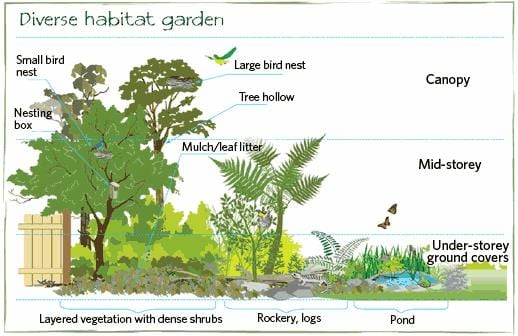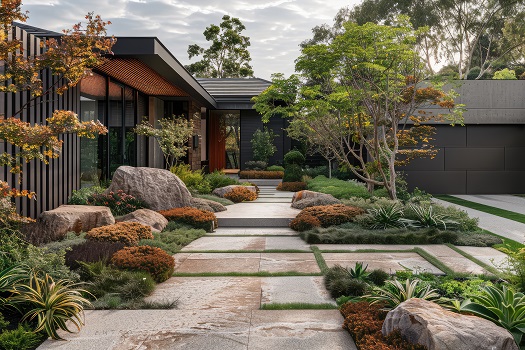What Does Hilton Head Landscapes Do?
What Does Hilton Head Landscapes Do?
Blog Article
Hilton Head Landscapes Fundamentals Explained
Table of ContentsGetting My Hilton Head Landscapes To WorkSome Known Questions About Hilton Head Landscapes.Everything about Hilton Head LandscapesThe Only Guide to Hilton Head LandscapesThe Definitive Guide for Hilton Head LandscapesThe Ultimate Guide To Hilton Head LandscapesThe Facts About Hilton Head Landscapes Revealed4 Easy Facts About Hilton Head Landscapes Shown
Kind compatibility is likewise a major part of unity in designone or 2 noticeably different forms are good for contrast and emphasis, however normally all various other kinds must have some similarities for a merged appearance. Structure refers to just how rugged or fine the surface area of the plant or hardscape material feels and/or looks.
Instances of plants with coarse appearance include philodendrons, agaves, bromeliads, hollies, hands, and hydrangeas. Hardscape with crude appearance consists of rough-cut stone, rough-finished brick, and incomplete timber with knots and an elevated grain. Aged or old construction material that keeps a weather-beaten surface is typically rugged in structure. Characteristics that develop great structure consist of little foliage; thin, strappy leaves (yards) or tall, thin stems; little, dense twigs and small branches; long stems (creeping plants); and small, fragile flowers.
Not known Facts About Hilton Head Landscapes
Many plants are moderate structure, in that they can not be explained as having either rugged or fine structure. Medium-textured plants act as a background to link and merge the coarse- and fine-textured plants.

To make a space feel smaller sized, place the coarse textures along the outer border and the fine structures closest to the customer. The detail of the coarse texture makes the plants appear closer and makes the room feel smaller. The viewed texture of plants can likewise transform with the range from the plant.
Fascination About Hilton Head Landscapes
Strong colors raise the comparison and make the structure appear coarser, while low-key colors can flatten appearance. Hardscape with a crude texturesuch as really rough rocks and vibrant, big timberstends to make all plant material appear more moderate textured. Developers usually establish a texture research (Number 8) on paper to assist choose the setup of plant materials.
Figure 8. Appearance study. Shade in plant material and hardscape includes interest and range to the landscape. Shade is one of the most conspicuous aspect in the landscape and is usually the focus of the majority of house owners; nonetheless, it is likewise the most momentary component, usually lasting just a few weeks a year for private plants.
The Ultimate Guide To Hilton Head Landscapes
An easy description of the shade wheel includes the three primary shades of red, blue, and yellow; the three secondary colors (a mix of 2 primaries) of green, orange, and violet; and six tertiary colors (a mix of one adjacent primary and additional color), such as red-orange. Color concept explains the relationship of colors per various other and how they should be made use of in a composition.

Comparable (occasionally called unified) color pattern are any three to five colors that are nearby on the color wheel, such as red, red-orange, orange, yellow-orange, and yellow, or blue, blue-violet, and violet (bluffton landscaping). The shades belong per various other because they normally consist of two main colors mixed to form a secondary and two tertiary colors, which implies they share common homes
They often tend to have high comparison in between them. The most common sets are violet and yellow, red and green, and blue and orange. Corresponding shades are commonly located normally in flowers; an usual set is yellow and violet. Shade is found in the blossoms, vegetation, bark, and fruit of plants.
How Hilton Head Landscapes can Save You Time, Stress, and Money.
Green vegetation in all its various tones is the dominant color by amount, however various other colors catch attention quicker because of their high comparison to the shade green. Color is additionally discovered in buildings, rocks, pavers, wood, and furnishings. Most shades in natural materials, such as rock and wood, are commonly low-key and tend to be variants of brownish, tan, and pale yellow.
Color is an essential aspect for developing passion and variety in the landscape. Colors have buildings that can influence emotions, spatial understanding, light high quality, equilibrium, and focus. One residential property of shade is defined loved one to temperaturecolors seem amazing or warm and can affect emotions or sensations. Trendy shades have a tendency to be relaxing and need to More Help be made use of in locations for leisure and tranquility.
The Ultimate Guide To Hilton Head Landscapes
The "temperature level" of colors can also impact the perception of range. Great colors often tend to recede and are regarded as being farther away, making a room feel bigger. Warm shades often tend to development and are perceived as being more detailed, making a space really feel smaller sized. Color can also be utilized to record interest and straight views.
Brilliant yellow, which has the highest possible intensity, also has a high comparison with all other colors (commonly explained as a "pop" of color) and must be used moderately. A small amount of intense shade has as much visual weight as a big amount of an extra controlled or weak shade.
Similar (in some cases called harmonious) shade systems are any 3 to five colors that are nearby on the shade wheel, such as red, red-orange, orange, yellow-orange, and yellow, or blue, blue-violet, and violet. The colors belong to each other due to the fact that they usually consist of 2 key shades mixed to form a secondary and two tertiary colors, which indicates they share typical homes.
Some Ideas on Hilton Head Landscapes You Should Know
Corresponding shades are frequently found normally in flowers; a common set is yellow and violet. Color is found in the flowers, vegetation, bark, and fruit of plants.
Environment-friendly vegetation in all its various tones is the dominant shade by amount, but various other colors capture focus quicker as a result of their high comparison to the color green - bluffton landscaping - https://h1tnhdlndscps.weebly.com. Shade is additionally discovered in structures, rocks, pavers, wood, and furnishings. Many shades in natural materials, such as stone and timber, are normally muted and have a tendency to be variants of brown, tan, and light yellow
Excitement About Hilton Head Landscapes
Color is a vital element for producing passion and selection in the landscape. Colors have properties that can impact emotions, spatial understanding, light top quality, balance, and emphasis. One residential or commercial property of color is explained about temperaturecolors seem awesome or warm and can impact feelings or sensations. Awesome colors tend to be soothing and need to be made use of in locations for leisure and tranquility.
Cool shades have a tendency to recede and are regarded as being further away, making an area really feel larger. Color can additionally be utilized to capture focus and direct views - https://www.metal-archives.com/users/h1tnhdlndscps.
For example, brilliant yellow, which has the highest strength, likewise has a high contrast with all various other shades (typically called a "pop" of shade) and should be made use of sparingly. A percentage of extreme shade has as much aesthetic weight as a large quantity of a much more controlled or weak color.
Report this page